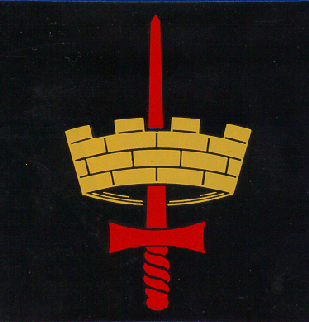You and I are close to violent agreement but not quite
Absolutely agree on this.
Absolutely agree again.
We probably diverge a bit here. IMHO these COs need to be RegF as does most of their staff. (Please note I do not consider ClassBs to be a viable entity except as temporary replacements for RegF - a unit has a combination of full-time positions - i.e. RegF PYs and part-time positions - i.e. Class As.) IMHO each of these battalion HQs (and by that term I include armoured, arty and engineer regiments) must be capable of being fully deployable.
As a further provision, each of these battalions must have at least one fully equipped RegF sub-unit. The purpose of this sub-unit is to be a fully trained and deployable as any other RegF sub-unit is now. It also provides an anchor around which the battalion revolves, and provides expertise and equipment to help train the ResF subunits. This is the reason I call these units 30/70 but again, the percentages are approximate and vary depending on the type of unit.
Secondly there would be two or three ResF sub-units each of which has a RegF core that reports to the Bn HQ. I tend to call these 10/90 units but the percentage is arbitrary and could vary from as low as 5% to maybe 20% depending on the needs of the sub-unit. this RegF core should include a Coy Comd, a CSM, a CQ (WO), a storeman, a Chief Clerk (Sgt) and a fin clerk as a minimum. Additional RegF PYs might be necessary for sub-units with complex equipment requiring maintenance or other tech skills. All other positions to complete a full establishment are Class A. The purpose of the core is to a) train its Class As; b) form a core around which a sub-unit can be stood up either by volunteers from its own Class As or others from across the region or by way of compulsory mobilization of its own Class As; and to train with the Bn during the Bn's RegF training
Thirdly there would be a HQ Company appropriate for the type of Bn it is and with a mixture of RegF and Class A personnel so as to properly support the RegF component and its equipment day-to-day and to train its own Class A to fully round out the company on mobilization.
We diverge a bit here. IMHO, the CBGs and RSS disappear entirely. Their RegF staff are reassigned to a) probably 2 or 3 additional deployable manoeuvre brigade and 2 additional support brigade headquarters and the 10% elements of the 10/90 sub-units.
Each of the RegF brigades is retained but also transformed into hybrid ones. I see heavy brigades as 30/70; mech brigades as one of 30/70 and one of 70/30; and light brigades of 70/30 to 100/0 (all ratios are RegF/ResF)
Each of the manoeuvre brigades is organized identically to the existing 1, 2 and 5 brigades as either armoured, mech or light. The support brigades are organized as an artillery brigade, a sustainment brigade and what used to be called a Manoeuvre Enhancement Brigade and which is now called a Protection Brigade. (I'm toying with the idea as to whether or not an Engineer Brigade should exist or whether the CERs should be distributed)
Each existing ResF unit (Inf bn, armd regt, arty regt, Engr regt) devolves into a Class A sub-unit assigned to core battalions (this may involve amalgamation of multiple weak units into a single sub-unit). Sigs and Medics and MPs devolve into Bde signals squadrons, field ambulances and MP platoons as well as one divisional sigs bn, one field hospital and one MP battalion. 21 EW stays as is. CAIR is tightened up. 4 ESR becomes a 70/30 unit. 4 RCA (GS) becomes a 30/70 unit. RegF and ResF service bns are reorganized to support, in appropriate RegF/ResF ratios, the manoeuvre brigades and create, in addition, a divisional sustainment brigade made up of a 30/70 maint battalion, a 30/70 supply battalion and two 10/90 Tn battalions
This I don't agree with. I see artillery in exactly the same way as inf and armour. A core arty regt HQ mostly RegF, a single 100/0 6-gun battery, 2 or 3 10/90 6-gun batteries, a 100/0 FOO Bty and a 30/70 STA battery
Just as a summary. The intent of the above is to create more deployable brigade and unit headquarters to a) ease the burden of rotations and b) form a core around which a force larger than 3 brigades can be raised. At the same time the structure retains existing 100/0 RegF sub-units which are capable of a high level of readiness. Any of the infantry battalions could thus deploy to Latvia with its own single company and a slice of battalion support or on another operation with either a 100/0 company or two from another battalion (if rapid reaction is needed) or its own 10/90 companies filled out by Class C volunteers (if time for predeployment training permits). In many ways our battle groups deploying to Afghanistan were generally an amalgamation of the RegF battalions within the brigade augmented by ResF members.
Overall, the system provides better leadership, access to equipment and training to reservists while expanding the Army's flexibility and capability.




